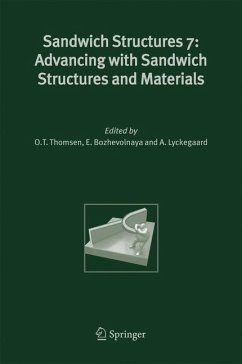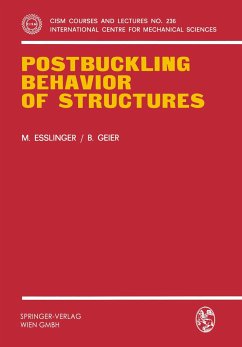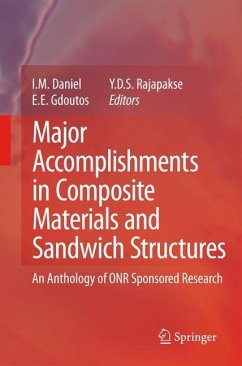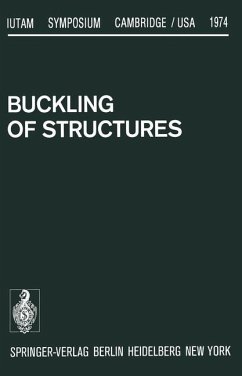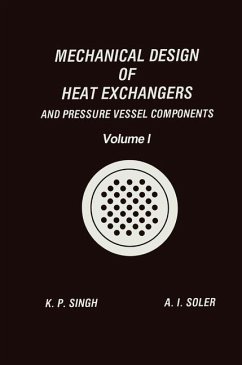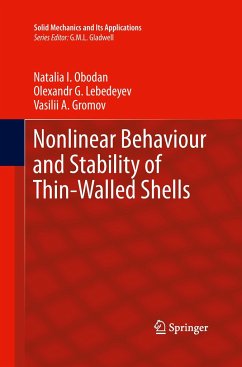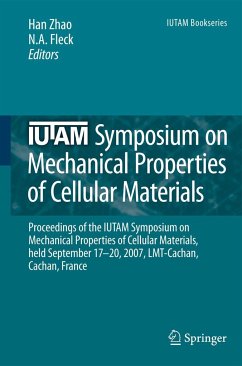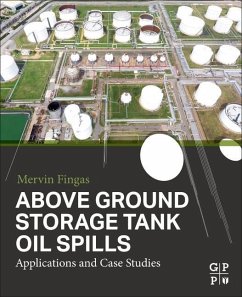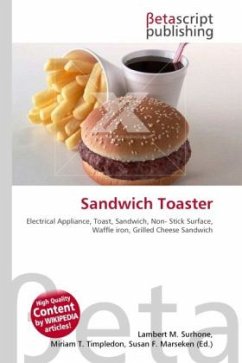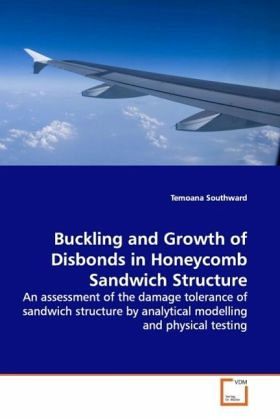
Buckling and Growth of Disbonds in Honeycomb Sandwich Structure
An assessment of the damage tolerance of sandwich structure by analytical modelling and physical testing
Versandkostenfrei!
Versandfertig in 6-10 Tagen
52,99 €
inkl. MwSt.

PAYBACK Punkte
26 °P sammeln!
The response of honeycomb sandwich structure todisbond damage, in a compressive stress field,has been assessed. Two types of disbond wereconsidered; those extending through the full width ofa panel (through-width) and those enclosed within thepanel boundaries (embedded). For each typeof disbond the failure process was establishedthrough four-point bend testing of 56 sandwichspecimens. For both types of disbond, failure wasfound to be governed by buckling-driven disbondgrowth and, consequently, models of buckling anddisbond growth were developed. Linear Winkler beamand plate models were used to...
The response of honeycomb sandwich structure to
disbond damage, in a compressive stress field,
has been assessed. Two types of disbond were
considered; those extending through the full width of
a panel (through-width) and those enclosed within the
panel boundaries (embedded). For each type
of disbond the failure process was established
through four-point bend testing of 56 sandwich
specimens. For both types of disbond, failure was
found to be governed by buckling-driven disbond
growth and, consequently, models of buckling and
disbond growth were developed. Linear Winkler beam
and plate models were used to predict disbond
buckling. Non-linear Winkler beam and
plate models were then developed to predict
post-buckling behaviour and the initiation of
disbond growth, through a fracture mechanics
analysis. All models showed excellent correlation
to test data. The models developed may be used to
assess the criticality of disbond damage in sandwich
structure having thin-gauge, composite face-sheets.
disbond damage, in a compressive stress field,
has been assessed. Two types of disbond were
considered; those extending through the full width of
a panel (through-width) and those enclosed within the
panel boundaries (embedded). For each type
of disbond the failure process was established
through four-point bend testing of 56 sandwich
specimens. For both types of disbond, failure was
found to be governed by buckling-driven disbond
growth and, consequently, models of buckling and
disbond growth were developed. Linear Winkler beam
and plate models were used to predict disbond
buckling. Non-linear Winkler beam and
plate models were then developed to predict
post-buckling behaviour and the initiation of
disbond growth, through a fracture mechanics
analysis. All models showed excellent correlation
to test data. The models developed may be used to
assess the criticality of disbond damage in sandwich
structure having thin-gauge, composite face-sheets.



